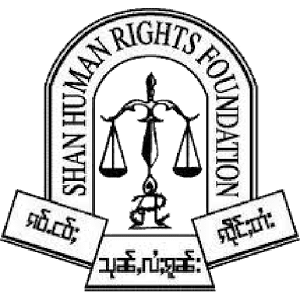Help our local partners realise their vision of hope for their communities

Update by Shan Human Rights Foundation
November 3, 2015
Naypyidaw’s escalated offensive in central Shan State displaces over 6,000; four civilians injured by indiscriminate shelling and shooting
The SHRF strongly condemns the escalated attacks in the past week by the Burma Army against the Shan State Progress Party/Shan State Army (SSPP/SSA) in central Shan State, involving indiscriminate shelling and shooting of civilians. The attacks have caused displacement of over 6,000 civilians from 22 villages in three townships since early October.
Naypyidaw has deployed 14 battalions to Mong Hsu, Mong Nawng and Ke See townships in a large scale offensive against the SSPP/SSA since October 6, allegedly to force SSPP/SSA to withdraw from “unauthorized” territories. In fact, the territories now being defended by SSPP/SSA have been under Shan administration for decades, as recognized by SSPP/SSA’s bilateral ceasefire in January 2012. Naypyidaw is therefore blatantly violating its existing bilateral ceasefire agreement.
Initial attacks to seize the strategic Ta Sarm Boo river crossing in Mong Hsu caused over 3,600 villagers to flee from their homes. Despite SSPP/SSA withdrawal from Ta Sarm Boo on October 15, Napyidaw troops are now advancing closer to the SSPP/SSA Wan Hai headquarters in Ke See. Fighter jets flew over Wan Hai on October 25, terrifying local villagers, who feared they would be bombed.
On October 26, the Burma Army shelled the village of Wan Mwe Taw, south of Wan Hai, damaging civilian houses, and seriously injuring a 25-year-old villager, who was trying to run away from the shelling. On the same day, Burma Army troops shot and injured a 53-year-old farmer from Wan KoongNim village, southeast of Wan Hai, who had fled from his home in early October, but was returning to tend his farm.
At midnight on October 28, the Burma Army began firing 120 mm shells at Wan Hai, precisely as hundreds of villagers were gathering at a temple to celebrate the end of Buddhist Lent. Eight shells landed in and around the village, damaging two houses and injuring two villagers, a 40-year-old woman and her 5-year-old daughter, who were sleeping at home.
This attack has caused the entire civilian population of Wan Hai, about 2,000 people, to flee from their homes and seek refuge in nearby villages and towns. Together with ongoing displacement from other areas, this brings the total number displaced by the current offensive to over 6,000. These displaced have had to abandon their homes and farms, and are in dire humanitarian need. 14 schools have been forced to close, with over 1,250 children unable to attend classes. Since November 1, 2015, the Burma Army has blocked all vehicles and people from accessing Hai Pa IDP camp.
SHRF deplores this relentless military invasion of Shan administered territories, and the scale of human suffering being inflicted on local civilians. Naypyidaw is entirely responsible for these attacks, displacement and abuses. The attacks rip the mask off the so-called peace process, making it clear that Napyidawhas no interest in a negotiated settlement to the conflict, but only in military subjugation of the ethnic peoples.
SHRF strongly urges the international community to publicly denounce Napyidaw’s military aggression and to withhold further support for the “peace process” until Napyidaw ends these systematic offensives against the ethnic peoples.
For further information, including photographs, details of civilian injury and numbers and locations of displaced villagers, please download the PDF version of this release below.
For further information, please contact:
Sai Hor Hseng +66 (0) 62- 941-9600 (English, Shan)
Sai Kheun Mai +66 (0) 94-638-6759 (English, Burmese)